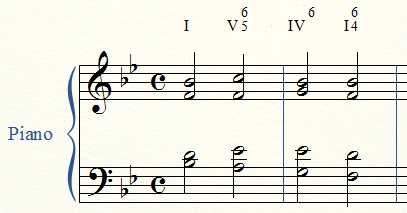

For example, type a b-flat lowercase chord simply by typing “bb”-PrintMusic knows the first character is the root, but the second is an alteration. PrintMusic also knows the difference between a lower case “b” chord and the character representing the flat (also a “b”). PrintMusic knows that what you type after the slash, underscore or bar is the alternate bass note for the chord.Ĭapitalization: PrintMusic displays chords like “F” and “e.” When you enter chords, it is case-sensitive.

PrintMusic looks at the characters in the order they’re entered when it tries to find a match for the suffix (all suffixes in your document appear in the Chord Suffix Selection dialog box) what you type must match the order of the suffix characters exactly.Īlternate Bass: Type a slash (/), an underscore (shift-hyphen), or a bar symbol (|) to indicate whether an alternate bass note should appear next to, below, or slightly to the right of the chord, respectively. Suffixes: When typing suffixes, type them as you’d read them. When you want a suffix that begins with an alteration (such as G f9f13), tell PrintMusic that the alteration isn’t part of the root by typing a comma after the root (in this case, by typing “G,b9b13”). In this case, when you type “Gb9”, PrintMusic normally associates the alteration with the root (and will display Gf 9). (Just type two or more consecutive characters for other alterations, like double- or triple-sharps.) In rare cases, PrintMusic may not know where an alteration belongs, such as the chords Gf 9 and G f9. PrintMusic does care about the keystroke, however for example, even if your chord suffix mixes music characters and regular text characters, PrintMusic will examine only the keys you press when looking for matches.Īlterations: Type a “b” or “#” (shift-3) to tell PrintMusic that the root or alternate bass has a sharp or flat, or that a sharp or flat appears as a character in the suffix. For chord entry, though, you need to type your chords using the Standard style convention.įonts: PrintMusic ignores display fonts when you type chords into your score-in fact, all the characters in your chords will appear in a regular text font as you type them. (PrintMusic also intelligently handles alterations in suffixes.) If you prefer to put the root “over” the alternate bass, type “Cmin7_Bb” instead-PrintMusic intelligently determines the difference and displays the chord the way you want it.ĭisplay and Entry: PrintMusic displays chords in Standard, Roman, or German style, using the Style checked in the Chord menu. PrintMusic knows that you want a flat when you type a lowercase “b”, and that you’d like an alternate bass note when you type the slash. Entering chords with alternate bass notes is simple too add a Cmin7/Bf chord simply by typing “Cmin7/Bb”. Last, PrintMusic will check whether the chord should display an alternate note in the bass enter a slash (/) or an underscore (shift-hyphen) to display the alternate bass next to or below the chord symbol, then enter the alternate bass note with any alterations (sharps or flats).įor example, enter an FMaj7 chord simply by typing “FMaj7” press the SPACEBAR to enter your chord and move to the next note. Second, enter the suffix PrintMusic will look at the suffix characters you type, if any, and try to find a matching suffix in your document (all suffixes in your document appear in the Chord Suffix Selection dialog box). For example, type “Eb”, “F” or “G#” (shift-3) to enter an Ef, F or Gs chord, respectively. Although you are not required to enter all parts of a chord symbol, PrintMusic interprets the chord symbol’s root, suffix and alternate bass, in that order.įirst, enter the root with any alterations (sharps or flats). A chord symbol is made up of one or more of the following parts: root, suffix, and alternate bass. When you type chords directly on-screen, PrintMusic follows some simple conventions to interpret what chord symbol was entered. (See the Keystroke table for a summary of the available keystrokes for entering chords and what they do.) When you’ve completed one chord, you can move quickly to the next note to continue entering chords PrintMusic displays the fully formatted chord after you enter it. Type the chord’s root, suffix and alternate bass note, if any. Click on the note or beat to which you want to attach a chord a blinking cursor appears above the note. When the Chord tool is selected, you can enter chords directly into your score. This menu lets you input and edit chords as well as specify whether fretboards will appear.
Adding roman numerals for chords finale printmusic how to#
You are here: Chord menu How to get thereĬhoose the Chord tool to make the Chord menu appear.


 0 kommentar(er)
0 kommentar(er)
